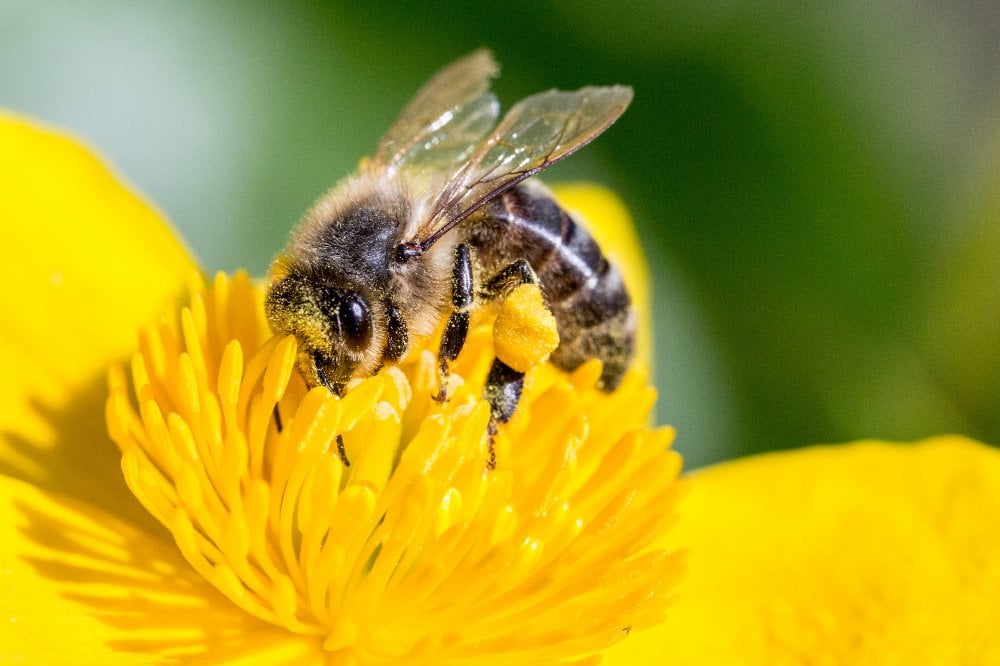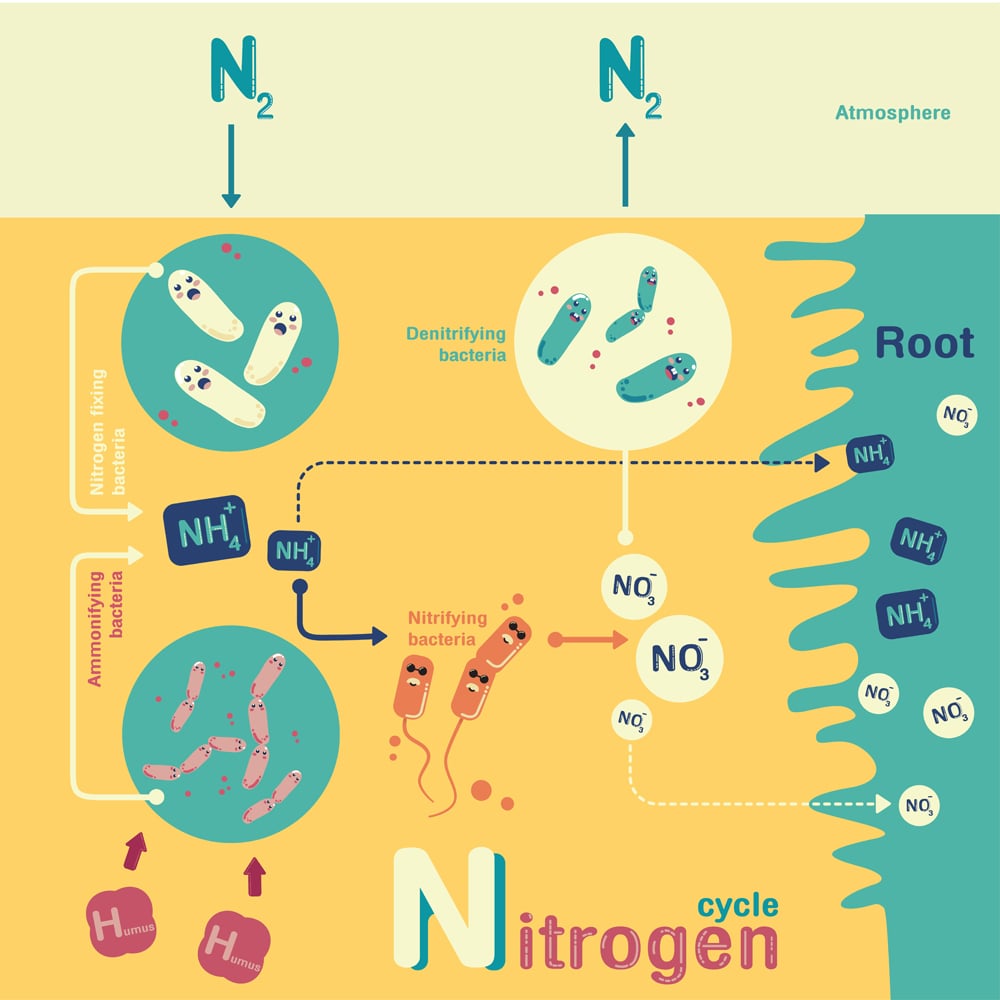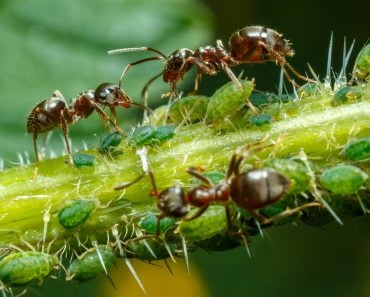A symbiotic relationship is a mutually beneficial relationship between two dissimilar organisms. Rhizobium-legume symbiosis is quite special, as it holds great benefits for agriculture and in maintaining the balance between living organisms.
The concept of a symbiotic relationship is not limited to two organisms. It interweaves all living creatures across the globe, from those visible to our naked eye to those that can only be seen using a microscope.
Just take a glance at your surroundings and you may find several examples of symbiotic relationships. The relationship between flowers and honeybees is a symbiotic one. Honeybees consume the flower’s nectar as food and to make honey. In this process, the pollen often gets stuck to the honeybees and ends up on another flower along with the honeybee, resulting in pollination. This benefits both the plants and the bees.
Let’s consider one of the most notable examples of symbiosis in the plant kingdom—the relationship between the bacteria rhizobium and legume plants like beans, lentils, and peas.

Recommended Video for you:
What Does A Symbiotic Relationship Mean? Why Is It Important?
The word “symbiosis” is derived from the Greek word “sym” meaning together and “bios” meaning life. This means that the organisms in a symbiotic relationship function efficiently when they’re working together.
The benefits of a symbiotic relationship are not limited to the organisms involved. They’re also important to the biosphere at large. This is because the biosphere provides food and shelter to other organisms, populates the land with plants and trees, maintains the population of plants and animals, helps in the evolution of individuals, and so on.
Now, imagine a scenario without symbiosis. There would be no coral reefs, no wide dispersal of seeds and pollen, no wide variety of plants and trees, and no driving force for evolution.
Clearly, the concept of symbiosis represents more than just a relationship.
What Are Rhizobia?
Rhizobia are an important class of bacteria present in large quantities in the soil. These specialized bacteria often live in close association with leguminous plants.
Unlike most soil bacteria that are harmful and cause infections in plants, rhizobia actually promote plant growth. They belong to the class of plant growth-promoting bacteria and help plants grow through “nitrogen fixation”.
All living organisms need nitrogen to grow, especially plants. Rhizobia can convert atmospheric nitrogen to ammonia, which is how it promotes plant growth, in a process called nitrogen fixation.
One may ask, the atmosphere is composed of 78% nitrogen, so why can’t plants take it directly from the air?
Atmospheric nitrogen is inert, meaning that it doesn’t easily react with other chemicals, so the gas cannot be utilized by plants or any other living organisms. Nitrogen fixation by rhizobia and other nitrogen-fixing bacteria can convert nitrogen into forms that can be used by living organisms for their growth and nutrition.

Why Do Rhizobia Establish A Symbiotic Relationship With Legumes?
We know that rhizobia cannot fix nitrogen in the soil without a plant present, more particularly, a leguminous plant.
The key player in the nitrogen fixation process is the enzyme nitrogenase, which reduces the nitrogen of the atmosphere to ammonia. A key aspect of the nitrogenase enzyme is its sensitivity to oxygen.
So, nitrogen fixation by rhizobia cannot occur in the free environment, as it has oxygen, so where does this process occur?
It occurs in small structures called nodules, in the root hairs of legume plants. Nodules are small specialized structures that form as a result of the exchange of signal molecules between rhizobia and legume plants. The interior of the root nodules provides an environment with very little oxygen (microaerobic) to facilitate nitrogen fixation. The process of nodule formation is termed nodulation.
Rhizobia were isolated from the root nodules of legumes for the first time in 1888 by Martinus Beijerinck.
However, not all rhizobia can nodulate all legume plants. The interaction between rhizobia and legumes is highly specific. There are certain genetic factors that regulate the specificity of nodulation between the partners involved.
When there is a scarcity of nitrogen in the soil, legume plants will release chemicals called flavonoids, which attract rhizobia. Upon sensing the flavonoids, rhizobia will secrete “nod factors”, which are the key signal molecules.
Root cells of the plant have receptors that can recognize and bind the nod factors. The chemical structure of the nod factors will determine the specificity of the interaction, its ability to nodulate the legume host.
This recognition event will provoke several changes in the plant, coupled with the curling of the root hair. This curling results in the formation of a tubular structure called an infection thread. Rhizobia will navigate through the infection thread, actively divide and eventually reach the root nodule where it can perform nitrogen fixation.

Why Is Rhizobium-legume Symbiosis So Special?
The plant-rhizobia produces a hemoglobin-like molecule called leghemoglobin with a high affinity for oxygen. The globin part is produced by the plant, while the rhizobia provide the heme part. The leghemoglobin provides oxygen to the rhizobia and simultaneously protects the nitrogenase enzyme from the harmful effects of oxygen.
Rhizobia will convert the nitrogen from the air to nitrogenous compounds for plant nutrition. Within the nodule, the rhizobia will then convert themselves into a structurally different form called bacteroids and will no longer use the nitrogen fixed by them. Plants, in turn, will provide photosynthetic carbon products as food for rhizobia. In this way, both species remain in a symbiotic relationship and continue to benefit from the other.
Rhizobia can protect plants against attacks by harmful pathogens and pests by direct or indirect mechanisms. Enhanced plant nutrition because of rhizobia-mediated nitrogen fixation makes the plant healthier, and capable of indirectly resisting pathogen attacks.
Rhizobia enhances plant nutrition by increasing the rate of nutrient uptake by the root hairs from the soil. The rhizobia also produce antibiotics and various other substances that can protect the plant from other pathogenic bacteria.
A Final Word
The relationship between rhizobia and leguminous plants is a classic example of symbiosis. The benefits of this interaction are not limited to nutrition; some of the compounds produced by rhizobia protect the plants against attacks by harmful pathogens and pests. It also confers plants the ability to withstand stress due to dehydration and temperature change, in addition to improving soil quality, crop yield, and crop quality.
References (click to expand)
- (1979, April 11). The Rhizobium -legume symbiosis. Proceedings of the Royal Society of London. Series B. Biological Sciences. The Royal Society.
- Maróti, G., & Kondorosi, Ã. (2014, June 30). Nitrogen-fixing Rhizobium-legume symbiosis: are polyploidy and host peptide-governed symbiont differentiation general principles of endosymbiosis?. Frontiers in Microbiology. Frontiers Media SA.
- Gourion, B., Berrabah, F., Ratet, P., & Stacey, G. (2015, March). Rhizobium–legume symbioses: the crucial role of plant immunity. Trends in Plant Science. Elsevier BV.
- Hirsch, A. M., Lum, M. R., & Downie, J. A. (2001, December 1). What Makes the Rhizobia-Legume Symbiosis So Special?. Plant Physiology. Oxford University Press (OUP).
- Wang, Q., Liu, J., & Zhu, H. (2018, March 9). Genetic and Molecular Mechanisms Underlying Symbiotic Specificity in Legume-Rhizobium Interactions. Frontiers in Plant Science. Frontiers Media SA.
- Oldroyd, G. E. D., Murray, J. D., Poole, P. S., & Downie, J. A. (2011, December 15). The Rules of Engagement in the Legume-Rhizobial Symbiosis. Annual Review of Genetics. Annual Reviews.












